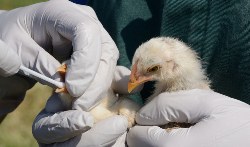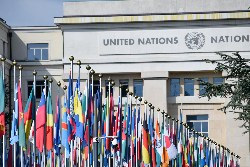Malnutrition levels shock World Vision team
by James Addis, World Vision Correspondent
If, after reading this account you want to help, click on World Vision or telephone NZ 0800 80 2000 and consider a relief plan that is affordable to you...
Records from a children's nutritional programme in north-western Afghanistan, which was abandoned because of the war, showed about half were suffering serious malnutrition, a World Vision team has discovered.
The documents were discovered at a health clinic in Quadis, a district of Badghis province.
The programme had to be abandoned following the September 11 attacks in the United States and subsequent fierce fighting in the region.
Children's progress was plotted on a coloured graph on each record, about 50 per cent were plotted in a red-band, indicating their level of under-nourishment had reached dangerous levels. The programme had registered about 3,000 children.
An Afghan doctor Abdul Kahim, still working at the clinic, said while the nutrition programme was running the clinic had been able to dispense ground chick pea, wheat flour and sugar to feed starving children but supplies had long since run out.
"Now we can only recommend to parents which kind of foods they should give their children and they must buy them themselves from the market," he said.
While the World Vision team was visiting the clinic a young mother brought her child in for attention.
The three-year-old infant, Safa Gul, weighed just 5.7kg, nearly 2kg under her ideal weight and was unable to stand, let alone walk.
World Vision nutrition project manager Francois Batalingaya said he was appalled to see a child in such a condition.
"To see a three year old child that has the weight of an eight month old baby and who is unable to stand is shocking," he said.
The child's mother Hari Zad said she had walked 10 kilometres to visit the clinic from her village of Shah Dost.
She said other villagers' children were suffering in a similar way and that she had no money to buy food for her child at the market.
"I don't have money for food for my baby," she said indicating Safa, "or for other members of my family. Unless we get something from an agency we have nothing," she said.
Afterwards the World Vision team comprising Francois Batalingaya, nutritionist Margaret Asewe and communications officer James Addis visited a nearby home where a child indicated by the records was also malnourished.
They borrowed scales and a height measuring board from the clinic to check the accuracy of the records.
The team found three children at the house all seriously malnourished.
The father of one of the children who gave his name as Bismillah said the family had nothing to eat except rice.
Bismillah said before the drought he had over 100 sheep, two ox for ploughing, 5 donkeys and a horse. "I was once a wealthy man but now I have nothing," he said.
Mr Batalingaya, a Rwandese national, said he was surprised by the severity of hunger, and said it was comparable to dire situations in Africa such as those that pertained in Liberia and Mozambique following civil war.
However he said the situation had not yet reached the disastrous levels of starvation that have occurred in Sudan and Ethiopia.
"We must act quickly before things get that bad," he said.
The World Vision team had hoped to visit more remote areas in Quadis, particularly those close to the former frontlines of warring factions, where conditions are expected to be even more dire.
However their vehicle suffered two punctured tyres and it was feared a further puncture would leave the team stranded.
A decision was therefore made to head for their temporary base at Badghis' main centre Qalay-i-Naw.
World Vision plans to begin a nutrition programme in western Afghanistan about 15 January and will cover the provinces of Badghis, Farah, Herat and Gohwar.
The programme will initially give a blanket distribution of Corn Soya Blend, sugar and oil to all pregnant and lactating mothers and children under 5 years.
Subsequent distributions will target only malnourished children and mothers.
The programme is expected to last for six months and benefit a population of about 150,000 mothers and children.
The cost of the programme is $5.7
million. Funding will come from Unicef ($4.37 million) and
World Vision's private donors. The Canadian government's aid
arm CIDA has also been approached to assist with funds.


 Ian Powell: Cuba And New Zealand: A Relationship Worthy Of Strengthening
Ian Powell: Cuba And New Zealand: A Relationship Worthy Of Strengthening Gordon Campbell: On bird flu, AUKUS entry fees and Cindy Lee
Gordon Campbell: On bird flu, AUKUS entry fees and Cindy Lee Binoy Kampmark: Israel’s Anti-UNRWA Campaign Falls Flat
Binoy Kampmark: Israel’s Anti-UNRWA Campaign Falls Flat Peter Dunne: Luxon Gets Out His Butcher's Knife - Briefly
Peter Dunne: Luxon Gets Out His Butcher's Knife - Briefly Binoy Kampmark: Warring Against Encryption, Australia Is Coming For Your Communications
Binoy Kampmark: Warring Against Encryption, Australia Is Coming For Your Communications Gordon Campbell: On Fast Track Powers, Media Woes And The Tiktok Ban
Gordon Campbell: On Fast Track Powers, Media Woes And The Tiktok Ban